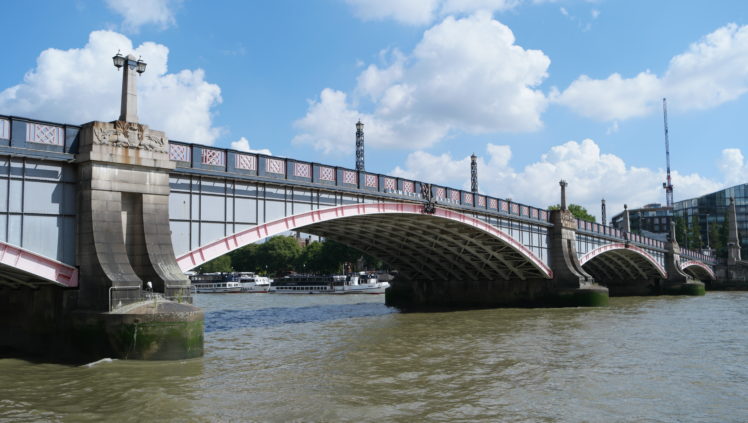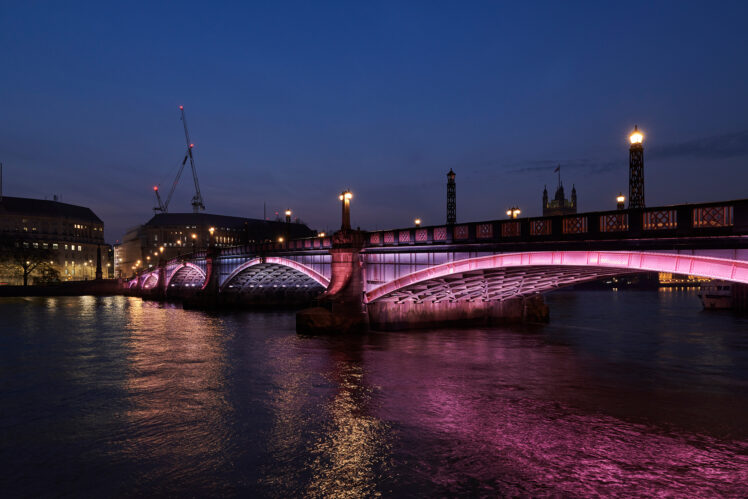Lambeth Bridge
Spring 2021
- Modes
- Owner
- Transport for London
- Completed
- 1932
- Designer
- Sir Reginald Blomfield and G Topham Forrest
- Heritage status
- Grade II
Designed by architects Sir Reginald Blomfield and G. Topham Forrest with London County Council engineer Sir George Humphreys, Lambeth Bridge was officially opened on 19 July 1932 by George V and Queen Mary. It is a five-span steel arch structure, adorned by decorative obelisks at either end and with piers and abutments clad in Cornish granite. Above each pier are the carved London County Council coats of arms, flanked by dolphins. Carrying four lanes of road traffic, the bridge is 776 feet long and 60 feet wide and cost nearly £1 million to erect. The colour scheme emphasises red, the colour of the leather benches in the House of Lords, which is near the bridge’s northern landing.
The obelisks at each end of the bridge appear to be topped with pineapples. What these fruits represent has been much debated. Some believe they are actually pinecones, an ancient symbol of hospitality. Others believe they are Masonic emblems of enlightenment. A popular theory is that they are a reference to the Tradescant family who settled in Lambeth in the 17th century. Father and then son attained the title of Keeper of His Majesty’s Garden, managing the Queen’s palace grounds at Oatlands, near Weybridge in Surrey. It was here that John Tradescant the Younger cultivated the first pineapple to grown on British soil.
The Lambeth Bridge Company commissioned engineer Peter William Barlow to design the original Lambeth Bridge, which was opened in November 1862 by a local businessman named Mr Hodges travelling across in his new fire engine. The 828-foot-long suspension bridge supported two 32-foot towers and crossed the river between Market Street, Westminster (which later became Horseferry Road), and Church Street, Lambeth. The bridge was largely used by pedestrians paying a day toll, since the approaches were too steep for heavily laden horse-drawn carts. The tolls were dropped in 1879 once the Metropolitan Board of Works had purchased the bridge. In 1911 the bridge had become visibly unsafe with one of the piers tilting and the iron structure rusting, and all traffic was banned from the bridge, which eventually led to a call for its replacement.
Before the Old Lambeth Bridge was constructed, a horse ferry operated here for centuries. Owned by successive Archbishops of Canterbury, the profitable ferry was the only location in London where you could cross the Thames with a horse and cart. The horse ferry was far bigger than most ferries of the time although it was not always failsafe. Through the years Oliver Cromwell, James I and at least one Archbishop are all rumoured to have fallen in the water here.

Artist’s Vision
Leo Villareal's artwork adorns Lambeth Bridge with a red glow - to match the benches of the House of Lords’ chamber and mirror the red accents of the bridge’s railings and arches.

Former lighting on Lambeth Bridge.

Leo Villareal's Illuminated River artwork on Lambeth Bridge.
Image: James Newton.